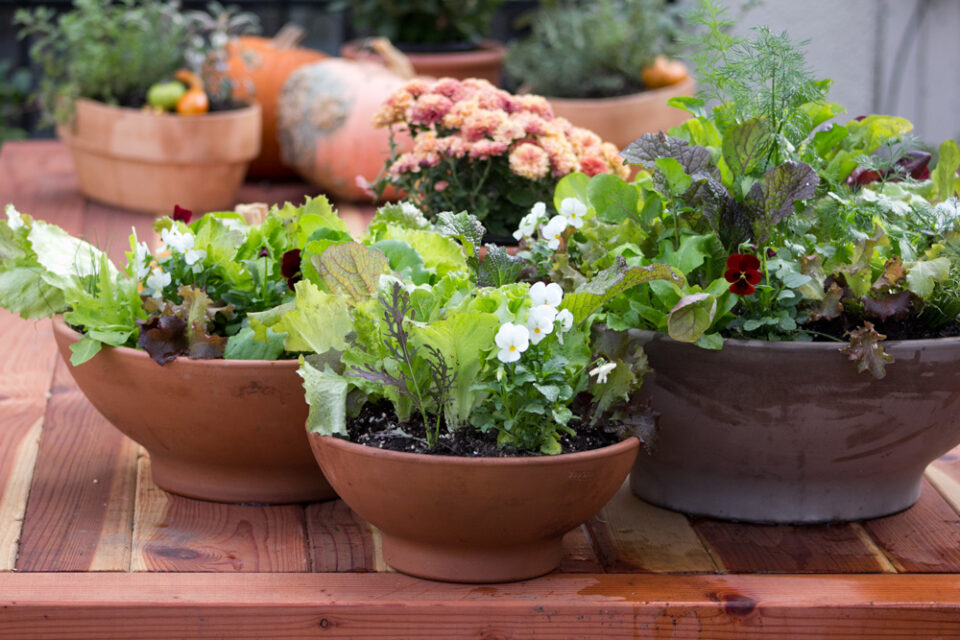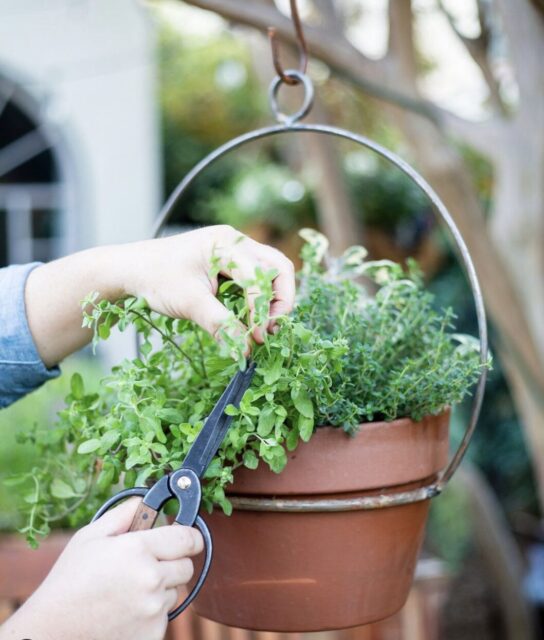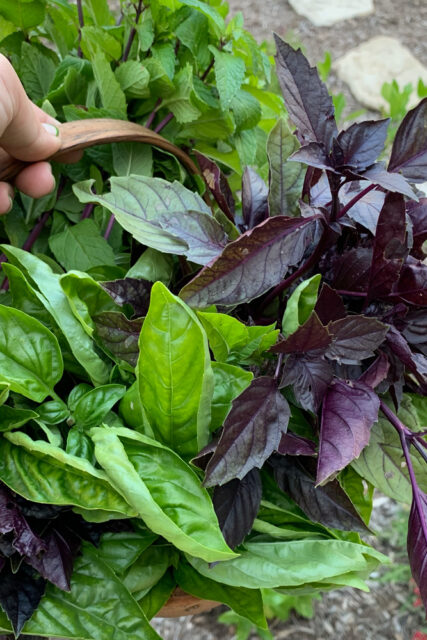In celebration of Mother’s Day this year we hosted a Mother’s Day Herb Garden & Wine Tasting Workshop in collaboration with Garden Studio Design and Heirloom Potagers’ Ashley Irene.
Heirloom Potager designs seasonal kitchen gardens for home cooks and culinary professionals in Orange County, California, and we interviewed Ashley on How-To Build an Herb Garden.
What are the essential steps for planning and designing an herb garden, especially for someone who’s new to gardening?
Planning an herb garden can be fun and very rewarding. For any project, I apply the Heirloom Potager growing philosophy: Grow what you love and eat what you grow. When we grow herbs we love, whether for taste, smell, or beauty, we’re more inclined to enjoy caring for it. Start planning an herb garden with a list of all the herbs you love to cook with. From there, add in other herbs used in some of your favorite cuisines. If you’re feeling really ambitious, consider adding in some rare, heirloom varieties that can be a welcome and unexpected surprise for your kitchen. From there, the goal is arranging them for similar growing conditions. Popular hardy herbs, such as rosemary, thyme, marjoram, sage, and lavender thrive with poor soil conditions and while they need water, don’t require it every day. Tender herbs, such as parsley, cilantro, and chives are great together as they enjoy a healthy drink of water and benefit from more fertile soil full of compost.

Could you recommend some herbs that are particularly easy to grow for beginners, and what are the best conditions for their cultivation?
Herb gardens are great for aspiring gardeners. Growing options you love eating ensures that caring for the garden is more enjoyable. Some of my personal favorites are thyme – lemon, orange, and English – as well as savory classics like chives, lavender, marjoram, bay laurel, Mexican oregano, and rosemary. These are all flavors I use frequently in cooking and have them at-the-ready throughout my garden in pots at our entryway, outdoor dining table, and tucked into various nooks throughout the formal potager. The key growing abundant herbs in our Southern California climate is to take advantage of the microclimates of an outdoor space. As an example, cilantro grows best in the cool season, and yet, it’s a favorite flavor we associate with summer. Planting cilantro in a semi-shady space or in a pot that can be easily moved to shade and harvesting frequently offers an opportunity to make the grow more of what we love even when the conditions can be too warm. Most herbs enjoy sunlight – just keep in mind our sun in Southern California is a bit more harsh and all herbs benefit from some shade to help keep them abundant.

What materials and tools are necessary for building an herb garden, and are there any cost-effective alternatives?
Herb gardens are beautiful at any size and scale. From spacious medicinal herbs to entryway planters, it’s all about making the most of your space. In all of our gardens, we incorporate herbs right along with fruits and vegetables, which is a great way to practice companion planting and utilize garden space effectively. For those with a small space or on a budget, I love creating beautiful herb planters. Select a piece of pottery or a growing vessel that matches your aesthetic and fill it with proper soil. Fill with your favorite herbs and some edible flowers such as alyssum These can be planted out seasonally depending upon the herbs included or moved into the garden once they outgrow the container. The best tools for herbs are a great pruner or sharp garden shears for harvesting.
How can one effectively manage pests and diseases in an herb garden without resorting to harsh chemicals?
The most effective pest management is to check your plants regularly. At least once per week, take some time to enjoy your garden, checking the soil moisture for watering needs and at the same time, looking at the undersides of foliage for any pests. Herbs are most impacted by soft-bodies garden pests which can be addressed with a few non-chemical solutions. Ladybugs are great for gardens, eating 10x their weight in aphids and herbs like fennel and dill attract lacewings. Most pests can be resolved with a forceful spray of water from a garden hose or with a dilution of eco-friendly soap with water sprayed early in the morning to thwart soft-bodied foes. If needed, removing dead or damaged leaves can often remove the pests and encourage the plant to put out new growth.
Can you share some tips for maintaining and harvesting herbs to ensure a continuous supply throughout the growing season?
The best way to maintain a healthy and abundant herb garden can feel counterintuitive to popular belief, but herbs especially benefit from frequent harvesting. We recommend harvesting at least once per week, while giving your herbs water and checking for pests. When harvesting, trim no more than 1/3 of the plant to reduce plant shock. Both tender and hardy herbs can be used fresh, dried, or frozen to enjoy in the kitchen or in a cup of tea.
Herbs can be pruned or harvested in two methods: at the soil line or at a leaf node. Woody herbs tend to be pruned at a leaf or stem node. Tender herbs are often cut at the soil line with the exception of basil, chamomile, and mint which benefit from cutting at a leaf node. Cutting at a leaf node encourages branching and bushier growth.

*** BONUS HERB CARE TIPS ***
Tender Herbs
Tender herbs and are so named for their tender stems and delicate nature.
These herbs benefit from more water than hardy herbs to keep them productive.
Tender herbs include basil, chamomile, chives, cilantro, dill, mint, parsley, and tarragon. These herbs are usually best added near the end of cooking, as a garnish, or added raw to salads or relishes to maintain their pungency and retain their green color. Both leaves and stems are edible, although if the stems have gotten woody, they should not be consumed.
Tender herbs can be stored on the counter or in the refrigerator in a glass of water. Remove any leaves low on the stems to avoid early rotting.
Hardy Herbs
Hardy herbs naturally get woody with age. These herbs produce tender new growth from older stems. Hardy herbs include lavender, marjoram, oregano, rosemary, sage, and thyme. These herbs impart a noticeable aroma and savory note to sauces, braises, and roasts through extended cooking. Leaves are best removed from the woody stem. These herbs benefit from a heartier pruning during the fall to encourage abundant tender growth ideal for culinary pursuits.
Hardy herbs can be stored in the refrigerator without water for up to two weeks. Place a piece of paper towel in a glass container or plastic bag to absorb any moisture. When dried and stored in glass air-tight containers, they can remain potent for a year.





